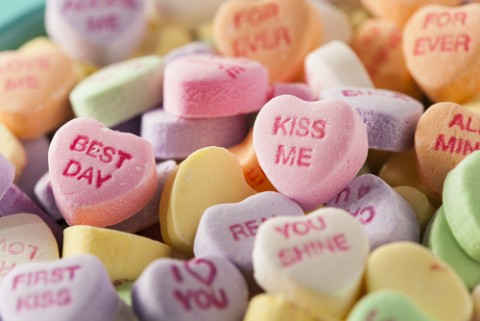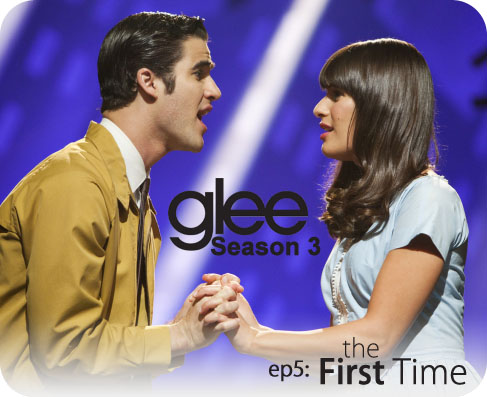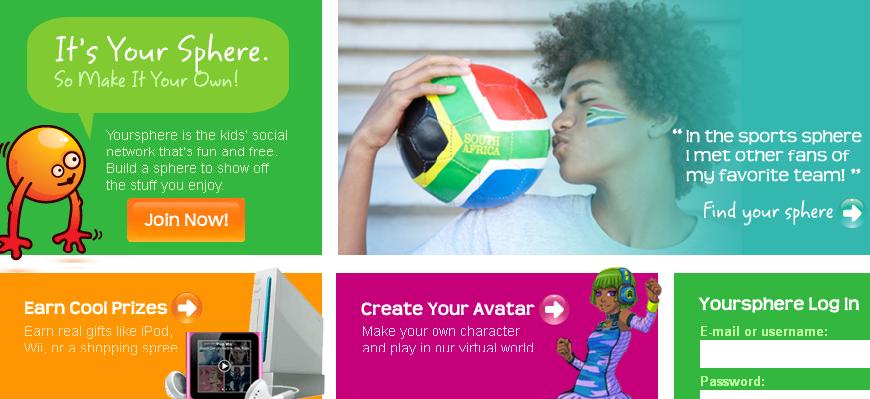Update Feb. 13, 2018 Related research and an excellent NYT read on the need for “porn literacy” given that teens exposure to online porn sites is distorting their lens of peer social norming, healthy intimacy, and respect and consent. WAY past time for comprehensive sexed and critical thinking on consent to prevent misinformation and disinformation. Oh, and by the way, could we lose the BDSM ’50 Shades Freed’ ads amidst family prime time viewing of the Olympics? Jaysus.
Update Feb. 13, 2015 With what many of us have deemed as 50 Shades of Abuse and disempowerment blitzing the media on Valentine’s Day, glamorizing violence against women, the impact of media’s inescapable cues to kids about what constitutes intimacy and trust has reached a toxic tipping point in fouling up the works.
Marketing that film with a twisted lens of ‘romance’ has tormented public health purveyors and healthy sexuality educators more than any kink think imaginable as it does a huge disservice to adolescents and teens who can’t help but lap up the buzz blaring at high decibel levels in surround sound.
TALK with kids before media does.
Mediated culture has shifted intimacy into new forms and opportunities for connection, from Skype snuggles and bedtime stories afar to FaceTime touchpoints and mobile mapping, the blurred lines can shift from connection to control in a blip. Loving relationships with respect and shared pleasure instead of high voltage drama are one of the most rare media messages kids consume.
Original Post Feb. 14, 2012 Feisty about commercialization of Valentine’s Day and corporate “couple-talism?”
Wondering why “ily” texts feel as empty and vapid as a meaningless “lol” habit?
 Check out Occupy V-Day on Tumblr where people take back the red-pink-purple-washing and share their own celebration of love in all its forms using media as the delivery channel. I wonder how many teens will join in, versus lip-locking and gift displaying on Facebook in “can you top this” attention-baiting mode?
Check out Occupy V-Day on Tumblr where people take back the red-pink-purple-washing and share their own celebration of love in all its forms using media as the delivery channel. I wonder how many teens will join in, versus lip-locking and gift displaying on Facebook in “can you top this” attention-baiting mode?
Lately it feels like there’s some very public grandstanding that wreaks of saccharine sterility in the form of ‘over the top “PDA.” (public display of affection in military terms)
When prom hoopla becomes like wedding fanfare and ASKING someone out is under scrutiny for social cred “oooh, how did s/he do it?” then voted up in social network “likes” of ‘awww you two are so cute together’ peer validation, it seems we’re edging toward exhibitionism over connection, acquisition over authentic, heartfelt commonalities shared.
Just when I think it’s curbed by a few choice youth comments lobbed to peers like reminder grenades, whammo, incoming…another round even stickier and ickier starts oozing onto the social stage of syrupy ‘sweethearts’ and ‘babes’ (or raunchy, provocative, thug-speak) to the point where I need a post-research shower.
I realize self-branding personas is part of the whole social media zeitgeist of growing up with digital intimacy (DYR report here) but when you start to see teens literally holding up signs with arrows to their new BF/GF relationship to have peers ‘weigh in’ it smacks of “lookee what I have” objectification consistent with the rest of our pop culture. Bleh. The tech tools become an almost robotic form of “I’ve got mine” (as in, “BF? GF? Check. Got one of those) which makes me squirm a bit projecting into the future of what might be mistaken for ‘intimacy.’
Some child development pros and family therapists call it out specifically: “Is media creating a generation of narcissists,” pointing toward the fame game of reality TV as the culprit with “hottie factor/arm candy” winning out over deeper touchpoints. I see it as more nuanced…
Mind you, my rub is not with the private texts or behind the scenes nuzzles and nudges, pokes and pings that bring relationships closer using media (including affectionate bonds between parents and children!)…
I’m talking about the ‘in your face’ look at me focus of appearance over substance, shallow surface layers over deeper communication.
(Nice thought piece by media researcher danah boyd titled Publicity and the Culture of Celebritization about this dynamic.)
I’d like to think teens can see right through ‘the public wall’ with transparent incredulity but I’m not so sure. And I simply wish “I love you” weren’t such a throw away line today, for starters.
TextPlus reports 35% of 13-17 year olds say their first I love you via text…And the first time I heard girls chirpily hug with a verbal “ily” (rhymes with silly) at a high school event, I tell you, I had to keep MY own stunned eyerolling in check, as my face fell into a frozen state, “did she really just cutify AND diffuse the power of that phrase? gah!” I felt like I was in a Saturday Night Live sketch spoofing a really bad media sitcom)
When we layer in the dialing down of ‘dating’ demographics to “tweens” (8-12 or 9-14 depending on how you define tween) circumspection about media influence gets even more important, as this tweet from social media kingpin David Armano reflects while helping his 12-year old son with a Valentine gift purchase:
…(er, make it a long one, David, that’s heady stuff in the pop culture zeitgeist landing on tweens)
On the flipside of “what’s really going on out there,” I find some solace in the recent Wall Street Journal piece “Tween D-8ing—It’s All About Texts” (with not one but TWO Shaping Youth advisory gal pals quoted (Rosalind Wiseman and Vanessa VanPetten)…it’s very helpful to diffuse some of the alarmism in redefining dating terminology altogether…
It puts context back into the single-digit “dating” ages to reframe texting as a tool for self-expression, navigating relationships in ‘training wheels’ form which is not much different than passing notes with hearts and flowers or Valentines to crushes of yesteryear.
(I’ll save the analysis of the Liz Claiborne study mentioned in the WSJ article for a separate post, but here’s one I wrote about their excellent program prior: “Love is Respect: Teen Texting Tools Aim to Dial Down Digital Abuse”
 The WSJ pullquotes reflecting middle school verbiage about “breaking up” and “dating for 7 days” and “she fell in love with a different guy” is definitely media influenced kid-speak vs adult cultural context…
The WSJ pullquotes reflecting middle school verbiage about “breaking up” and “dating for 7 days” and “she fell in love with a different guy” is definitely media influenced kid-speak vs adult cultural context…
…But it also points to the “kids getting older younger” (KGOY) effect that can rob kids of childhood by layering in “shoulds” creating undue pressures and anxiety early on. (see Glee Teen Sex facts: CDC vs. Hollywood TV or watch any depiction of young ‘tween’ sitcoms from Disney to Nickelodeon to see how early ‘dating’ gets factored in by social norm–I recall “The Suite Life” being my first head-turner for overt seeding of same)
When I read the online youth poll of 787 members of kids’ social media site Yoursphere saying “60% think parents should let middle-schoolers date,” I gave founder Mary Kay Hoal a call to ask her to elaborate so adults don’t wig out on what that might mean…
Here are some highlights from our conversation:
Amy Jussel, Shaping Youth: With kids as young as elementary school talking about dating (what they see in media, what they hear on playgrounds) how can we give parents context for redefining this much more casual texting/social media experience?
I’m sure some of your thoughts didn’t fit into the copy constraints of the WSJ piece, so fill in the blanks for us…
 Mary Kay Hoal, Yoursphere: First of all, we need to differentiate what we mean by social media.
Mary Kay Hoal, Yoursphere: First of all, we need to differentiate what we mean by social media.
Sites like Facebook already skew towards ‘dating’ from the start by asking relationship status and what gender you’re interested in.
Yoursphere by contrast, is a “by kids for kids” social networking site for youth, NOT an adult Facebook style platform.
(Amy’s editorial note: I’ve heard Yoursphere called a ‘safe site/lock box’ experience with its moderation for tweens etc, on the COPPA compliant front as an under 13 user interface, with user-generated content)
The implication of how you ‘present’ on a site like Facebook is totally different than a youth site like Yoursphere which is all about kids’ interests and commonalities WITHOUT a dating context…
Yoursphere is youth-interest based vs youth-sexual based, so it’s about being yourself, building self-esteem through shared spheres; a natural way to form friendship bonds…
 We’re very proactive about educating kids and instilling social media skills within layers of interests (“spheres”) that reflect who they are age appropriately. (a love of sports/hobbies/positive accomplishments, badges like kindness, digital citizenship)
We’re very proactive about educating kids and instilling social media skills within layers of interests (“spheres”) that reflect who they are age appropriately. (a love of sports/hobbies/positive accomplishments, badges like kindness, digital citizenship)
As for the research, 98% of our polls are directly about what kids think…and 62% of our members are between 9-14…So yes, 68% replied yes and 32% said no that middle-schoolers should date…but you have to consider the healthier context the poll is taken in…they’re confident who they’re talking to on the site. ‘Dating’ essentially means text-based interaction where one child texts another and asks if they “want to go out.” After a ‘yes’ they’re ‘going out.’
That’s a huge difference from an 11 or 12 year old accessing adult-social media communities like “Smash or Pass” on Facebook where others comment as to whether they’d “smash” (have sex) or “pass” (not have sex) with the person which feeds on an unhealthy culture to begin with.
Amy Jussel, Shaping Youth: I’m all for training wheels in social media but am still disturbed by the over-arching element of accelerating childhood and body-snatching kids into peer pressures they don’t need…like all the ‘dating’ talk of who’s doing what to whom (when we know 60% of boys lie about experiences anyway)—What does your youth audience say about this nervousness and angst?
Mary Kay Hoal, Yoursphere: We have a (PAID!) editorial staff with the youngest age 10 and the oldest age 16, so here’s an insightful article by a 14 year old girl, Laura who shares her views on ‘the appropriate age to date’…
(Laura: 14, edited for length) “There is a lot of controversy over at what age is appropriate for kids to start dating. We hear it from our dads (“How about when you graduate from college, hun?”) we hear it from our friends (“the moment you can!”)…”How often have you heard a senior in High School say they find it gross when middle-schoolers date? Or have your mom tell you you’re growing up to fast…
…”If you’re more interested in having a boyfriend before being interested in the boy you wanted to be your boyfriend, (or is your boyfriend) you may be submitting to societal pressure to date earlier and often…” (wise statement…see more from Laura cont. here…)
Amy Jussel, Shaping Youth: One of the biggest issues I have with our hyper-sexualized media culture impacting the health and well-being of young kids/tweens is this falsification of intimacy creating a disappointing, barren emotional landscape for kids. (see Buffed Boy Body Image & Tween Scene Hottie Factor along with eating disorder surges, and appearance-based harm of early sexualization per the APA–more resources at end)
How can we best use parenting practices and media literacy to teach kids the difference between REAL intimacy and FAUX/staged intimacy when objectification is rampant and ambient? (e.g. toxic cues landing on kids in family events like the Super Bowl Teleflora “give/receive” and Go Daddy’s version of female worth that puts ‘hot’ as the cultural currency seeping into kids’ psyches with very real societal ramifications)
Mary Kay Hoal, Yoursphere: Parents are a big influence no matter what media depicts. They need to make it clear early and often what types of behaviors, photos, social media, texting and dating parameters are ‘okay’ based on ages and stages…Parents need to expand their own media literacy WITH their kids and spend time getting to know the sites they’re on…
As a precursor to “dating,” parents can host kids in their home to get to know their child’s friends, encourage kids to go out in groups versus pair up…and definitely use social media that’s age appropriate rather than scaling up and ‘letting them in early’ to teen/adult content …you just can’t put a filter on what streams in.
For example: Facebook’s Sims Social is a game that allows your child to have an avatar and that avatar can undress and sex “real-time” with those on their “friends” list.
MyYearbook’s “Owned” is a money maker for the site. A member purchases their virtual currency – “lunch dollars,” and “buys and sells their friends.” Status in the community is gained based on how many “lunch dollars” you were “sold for” or who you “own.” The more sexually explicit the photo, the higher the price.
Teenspot is another example of a site where the focus is on sexual orientation (you search for people based on their sexual orientation and “rate” people) Tagged – involves profiles of 15 years olds making themselves available for different sexual activities…
Parents can’t be bystanders…they need to stay involved and communicate about what constitutes ‘dating’ and ASK kids what they mean when they don’t understand the tween or teen cultural context.
There are plenty of benefits to engaging kids with this ‘early dating’ idea to set expectations, curfews, parental involvement, activities…all of that.
Amy Jussel, Shaping Youth: Thanks, Mary Kay. Clearly, social media can be used to nourish or deplete, just like Valentine’s Day itself.
If we can use media to reframe Valentine’s Day to reiterate it is NOT an indication of validation of worth, lovability, datability etc. in this corporatized, commercialized “couple-atism” credo we’ll make some headway with kids to show substance over surface.
I’d sure love to hear certain phrases flushed from the youth lexicon of objectification like “s/he has an expiration date” as if we’re literally putting human beings into a meat market, or “s/he is so ‘yesterday’ as if relationships can be devalued and turned over into the discard pile like a game of gin rummy…
Or “I love you” status lines when you just saw the ‘relationship’ button was lit up with another name only last week. You know what I’m saying…Let’s work on the ‘faux factor’…
It would go a long way toward chiseling away at the ‘object’ barrier to genuine relationships, and start setting the tone for more humane ‘dating’ environs regardless of the medium…
Text. Status line. Virtual worlds. Social network. Or good ol’ popcorn and a movie.
Happy Valentine’s Day digital dear ones. L8r. xo
Related Valentine’s Day Reading; Shaping Youth Archives
This Valentine’s Day, Fall Madly In Love…With YourSELF.
How Now, Green Cow: SMOOch: Valentine’s Day E-Cause Cards
Project Happiness: How are YOU Faring?
Update: Valentine’s Day As a ‘not youth PDA’ but interesting, related sidebar: Anyone see this marriage proposal via InfoGraphic? (btw, she said yes…but what if she hadn’t?…em..) Mashable article on soulmate probability fascinating indeed.










Excellent site. A lot of helpful information here. I am sending it to some friends ans additionally sharing in delicious. And naturally, thank you for your sweat!